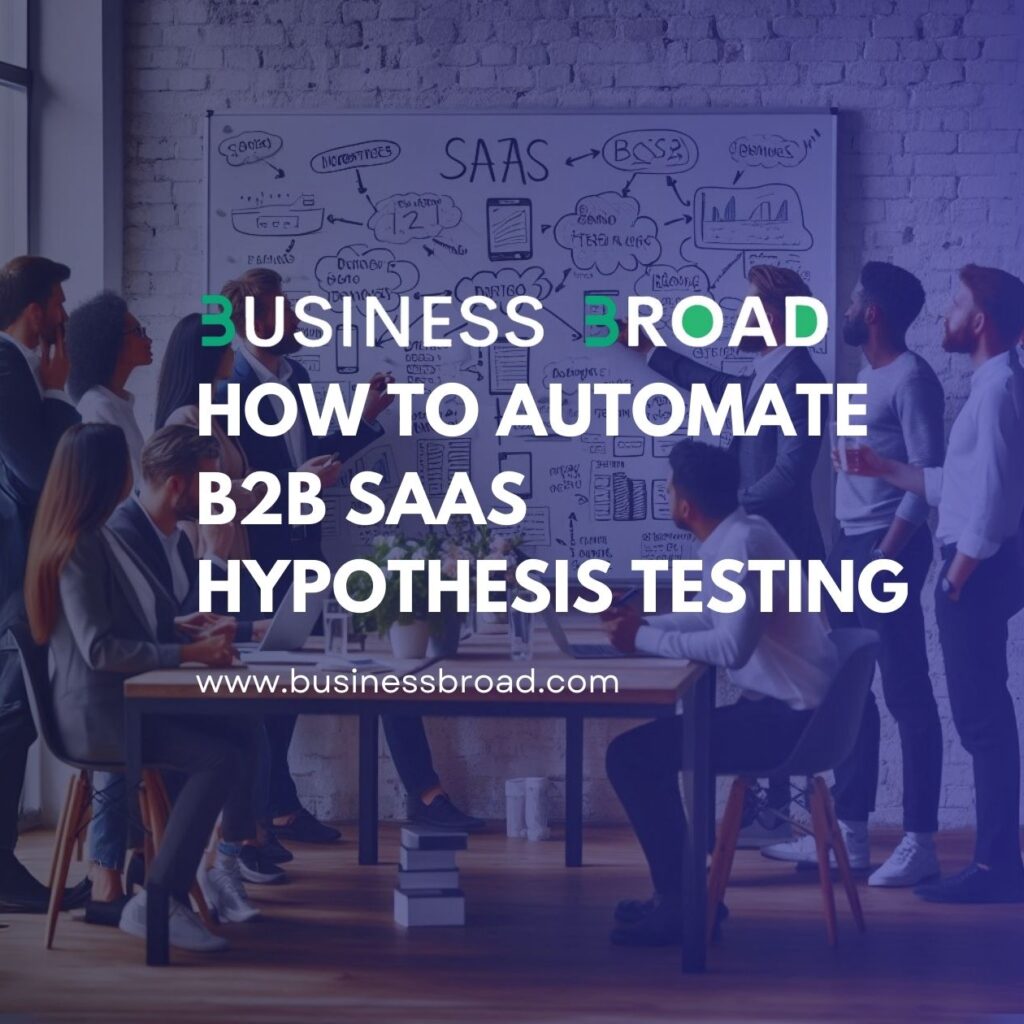Hypothesis testing is a critical part of developing and optimizing B2B SaaS products. It helps companies validate assumptions, understand customer behavior, and make data-driven decisions. Automating this process can save time, reduce errors, and provide faster insights. Here’s a step-by-step guide on how to automate B2B SaaS hypothesis testing effectively.

1. Define Your Hypothesis
Start by clearly defining the hypothesis you want to test. A well-defined hypothesis includes:
- Objective: What you aim to achieve or learn.
- Variables: The independent variable (what you change) and the dependent variable (what you measure).
- Expected Outcome: What you predict will happen.
Example: “Implementing a new onboarding process will reduce customer churn by 10%.”
2. Choose the Right Tools
Selecting the right tools is crucial for automating your hypothesis testing. Some popular tools for B2B SaaS include:
- A/B Testing Platforms: Tools like Optimizely or VWO can help you run controlled experiments and gather data.
- Analytics Tools: Platforms like Google Analytics, Mixpanel, or Amplitude can track user behavior and provide insights.
- Marketing Automation: Tools like HubSpot or Marketo can automate email campaigns and track user engagement.
3. Set Up Data Tracking
Implement data tracking to collect the necessary data for your hypothesis test. Ensure you track:
- User Actions: Clicks, page views, form submissions, etc.
- Conversion Metrics: Sign-ups, purchases, trial completions, etc.
- Behavioral Data: Time spent on site, bounce rates, user flows, etc.
Use tools like Google Tag Manager to manage your tracking codes and ensure accurate data collection.
4. Automate Experimentation
Automate the execution of your experiments using A/B testing tools. Here’s how:
- Create Variations: Develop different versions of your product feature or marketing message.
- Random Assignment: Automatically assign users to different variations to ensure a fair test.
- Run the Test: Let the test run for a sufficient period to gather meaningful data.
5. Analyze Results
Once your experiment is complete, use analytics tools to analyze the results. Focus on:
- Statistical Significance: Ensure the results are not due to chance by calculating the p-value.
- Impact on Metrics: Compare the performance of different variations on your key metrics.
- User Segmentation: Analyze how different user segments responded to the variations.
6. Make Data-Driven Decisions
Based on the analysis, decide whether to implement the changes or iterate further. If the hypothesis is validated, roll out the successful variation to all users. If not, learn from the results and refine your hypothesis for future testing.
7. Continuous Improvement
Automate the entire process by setting up a feedback loop for continuous improvement. Use tools that integrate with your data sources to automatically update and refine your hypothesis based on new insights. This iterative approach ensures ongoing optimization and improvement.
Conclusion
Automating B2B SaaS hypothesis testing can streamline your product development process, reduce errors, and provide faster insights. By following these steps, you can effectively validate assumptions and make data-driven decisions that enhance your product and drive business growth.





1 Comment
[…] How to Automate B2B SaaS Hypothesis Testing […]